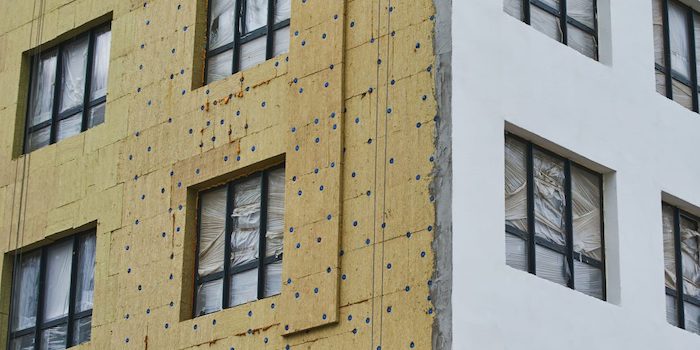Do-it-yourself insulation of facades with expanded polystyrene

To be comfortable in your home, it must be warm. And it’s up to you to take care of it. Of course, all houses are built using insulation for walls, floors and ceilings. But over time, any material tends to lose its qualities, t.e. age. And the more years your house is, the worse its thermal insulation properties.
Therefore, there is a need for additional protection of the house from the “leakage” of heat from it. For this purpose, I use 2 methods of insulation: wall cladding with insulating material inside the premises or external insulation.
It is preferable to use the second option,.to. internal insulation will “take away” part of the room space from you. And then there will be a feeling that the walls, as it were, “moved”.
Do-it-yourself insulation of facades with polystyrene foam is not difficult if you have the basic skills to repair your home. The main thing is to choose the right material. As a rule, foam sheets with a thickness of 30-40 mm are chosen for the insulation of residential buildings. When buying a heater, check with the seller whether this material has the property of self-extinguishing. After all, in addition to maintaining heat, you should also take care of the fire protection of the building.
Any work should always begin with surface preparation. Also here – the first stage of facade insulation will be preparation for the process of walls. What is it? Naturally, in leveling the surface: all recesses, cracks, cracks should be puttied, protrusions and tubercles should be knocked down. After sanding the places to eliminate defects, clean the surface of the walls from dust and dirt. After that, the walls need to be primed.
Since the insulation is a square foam board, they should be attached to the facade according to the principle of finishing tiles – in horizontal rows. For convenience, under the first, bottom row, it is recommended to lay a basement profile, on which, in fact, the bottom plates will rest. The profile is laid along the entire perimeter of the facade in one continuous line. It is also necessary to protect the insulation from the penetration of small rodent pests into the foam.
When the profile is fully installed, proceed to gluing (step by step) foam boards, starting from one of the corners of the house. Expanded polystyrene is attached to the wall with a special adhesive that can be applied both to the plate itself and to the wall surface.
The second row of laying foam boards should be made taking into account the dressing of the seams, t.e. in a checkerboard pattern relative to the underlying row. And so on – row after row to create a “checkerboard pattern”.
When all the work is completed and the glue has completely hardened, for reliability, the insulation boards are additionally attached to the wall with dish-shaped dowels. They should not be placed randomly, but according to a certain principle: 1 dowel – in the center of the plate, the rest – at the junction of the corners of adjacent plates.
Do-it-yourself insulation of the facade with polystyrene foam does not end there. Now it is necessary to revise the quality of the sticker of the insulation material. Check if there are any gaps between the plates. If they are insignificant – sing. In large slots, it is necessary to insert foam inserts, “planting” them on glue.
The next step is plastering the surface of the insulation. But in order for the mortar to adhere well to the foam boards, a reinforced mesh must first be glued on them. At this stage you will have to show dexterity, t.to. Special glue for fastening the grid dries very quickly – you must have time to smooth the material.
After the plaster is applied, let it dry a little, and then align it with a grout or emery. After waiting for the complete drying of the first layer of plaster, apply the following (with further grouting).
By dry finish plaster, you can paint the facade. For this, any paint designed for use in external decoration is suitable.
Having completed all the stages of work on insulation of the facade without haste and in compliance with the technological process, you will absolutely provide your house with warmth. So no winter blizzards are afraid of you.



